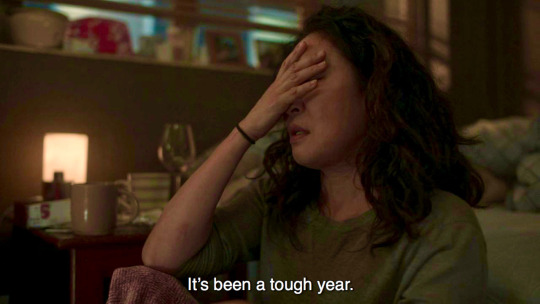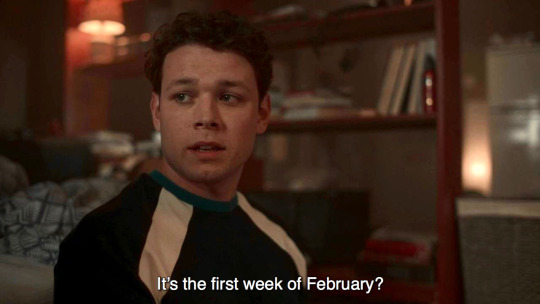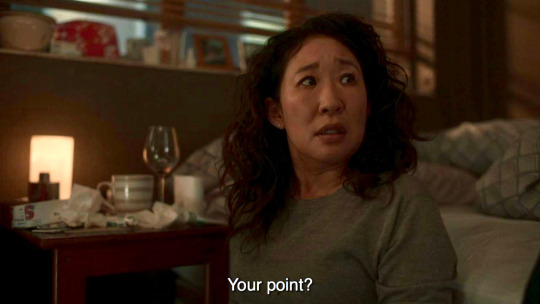It's what I feel like, when I feel like. My other blogs are @cynidicherbalist for Homestuck stuff, @candlesmagickandwitchedohmy for witchy stuff and @safe-and-smol for sfw age regression, age dreaming, and pet regression. DNI with the last one if nsfw
Last active 4 hours ago
Don't wanna be here? Send us removal request.
Text
“The Wounds That Remain”
There are wounds that remain because we have not yet forged a moral consensus:
“…in pluribus unum”


The image underscores a defining moment in our civic life: when expressions of dissent are met not with dialogue but with the politicization of militarized force on behalf the executive’s brand. It echoes a troubling pattern—where calls for justice and inclusion are conflated as partisan threats, and the defense of plurality is treated as provocation.
*
There is a deepening divide in our country—one intensified by the 2025 return of the Trump administration and the M.A.G.A. movement’s project to “reform” America by disrupting the constitutional principles that have long undergirded our democracy. This movement has emboldened some to claim they are under siege—particularly by Black Americans—whom they accuse of harboring irrational hatred. Yet this accusation ignores a deeper truth: those who make it often refuse to confront their own complicity in the conditions that produce widespread suffering and rightful indignation. They see themselves as blameless while dismissing the lived experience of others.
This dissonance reveals a persistent tribalism—a complex masked as patriotism, often directed at marginalized communities. It demeans empathy and stifles accountability.
Dissent, however, is the lifeblood of democracy. And while we may cherish this nation—its landscapes, its cultural richness, and its founding ideals—we must also confront the unfinished work of justice. To celebrate the Constitution while ignoring the legacy of slavery, segregation, and systemic inequity is to cheapen both our history and our future.
Nowhere is this more evident than in our criminal justice system. The need for reform is no longer a partisan position; it is a moral imperative. Communities of color remain disproportionately targeted, criminalized, and subjected to violence under the guise of law and order. Police departments across the country have repeatedly failed in their duty to protect those most vulnerable—those left behind by lack of opportunity, education, and support. When these conditions are met not with compassion but with brutality, we witness the most abhorrent face of cruelty.
One may love this country profoundly, but such love must be active—committed to fairness, not nostalgia. Justice and equality are not rewards for silence; they are the birthright of all who live here.
The Black Lives Matter movement is not a threat to American values; it is a call to fulfill them. It is not hatred to protest injustice. Hatred lies in silencing dissent, in trampling the rights of others while claiming moral high ground. Time and again, those in power have distanced themselves from the oppressed, especially those stripped of political voice or voting rights. This indifference persists until solidarity becomes unavoidable.
To relativize the murder of young Black men—or to remain silent—betrays a refusal to understand the long arc of racism in America. Gestures of inclusion cannot substitute for truth. Real justice requires not half-measures, but fullhearted resolve.
And now, that same machinery of suppression is turning with renewed force against immigrants, against LGBTQ Americans, and against the very principle of diversity.
—as demonstrated by the unnecessary militarization of one square mile Los Angeles in June 2025, where localized protests were amplified by the federal government as if they were a national insurrection—
The mobilization of troops to suppress peaceful protests—replacing law enforcement with military assault—, the criminalization of migrants seeking refuge, and the push to roll back gay rights—these are not isolated policies. They are symptoms of the same moral aberration of the executive branch as a political brand: the fear of plurality.
This fear has now targeted Diversity, Equity, and Inclusion (DEI) initiatives themselves. These programs, born out of civil rights struggles and meant to remedy historical exclusion, have become scapegoats. DEI is not a threat to merit; it is a framework for justice. It is not a matter of political orthodoxy, but about ensuring access, visibility, and dignity for those long marginalized. The opposition to DEI is not a neutral debate—it is a calculated attempt to suppress the very plurality that gives meaning to democracy.
—Often it reduces that plurality to a caricature. In partisan circles, the term “woke” has been weaponized to dismiss any effort toward inclusion or redress as absurd, elitist, or dangerous. What began as a call to remain alert to injustice has been twisted into a tool of mockery—less an argument than a reflex, deployed not to clarify but to silence. Yet justice does not lose its urgency because it is ridiculed.
Banning DEI offices, defunding inclusion efforts, or labeling diversity work as ideological indoctrination reflects not strength, but fear. Such actions undermine the foundational values of liberty and justice, replacing inclusive citizenship with enforced conformity.
The desire to reverse LGBTQ rights, to demonize racial justice movements, and to silence DEI are all parts of one piece. These are not isolated grievances; they are expressions of an intolerant worldview seeking dominance through exclusion—echoes of McCarthyism, the early 1950s campaign led by Senator Joseph McCarthy, whose televised accusations of communist infiltration turned suspicion into a weapon and captivated a fearful nation. These are not the marks of a strong republic, but the signs of a fearful and weakened society.
And yet, the Republican majority in Congress—those enabling Trump and embracing the politics of M.A.G.A. disruption—has further deepened the moral deficit—cut taxes for billionaires and dismantled the nation’s social and political infrastructure. They have fueled inflation through aggressive foreign tariffs and pursued a global posture that increases instability, all in service of enriching a narrow class of oligarchs at the expense of the common good.
To love this country is to reject that fear and the brittle cowardice that sustains it. To love our nation is to defend and embrace its pluralism. To love it is to confront its contradictions—not with cynicism, but with resolve.
We are not a perfect union, but we are still a union. The path forward is not backward. It begins where justice lives: in the search for truth, in compassion, in courage.
~
PostScript
Project 2025 and the Machinery of Conformity
Among the clearest examples of how fear of plurality has been codified into political strategy is Project 2025—an ambitious blueprint for restructuring the U.S. federal government, advanced by The Heritage Foundation and now actively endorsed by the Trump administration. Though its architects invoke the language of liberty and constitutional reform, its underlying goal is not democratic renewal but ideological consolidation.
Project 2025 does not merely aim to reduce government. It seeks to dismantle the administrative State, eliminate civil service protections, and replace career public servants with partisan loyalists. Under the guise of “draining the swamp,” it proposes a purge—not to restore constitutional balance, but to empower a narrow executive elite. This is not conservatism in any meaningful sense. It is executive authoritarianism draped in populist garb.
Even its rhetoric of “taking back the country” belies its intent: not to restore pluralist democracy, but to impose uniformity—cultural, political, and moral. DEI initiatives are to be dismantled, public education reshaped to reflect a singular ideology, and dissent within the government neutralized. These are not reforms; they are instruments of control.
Such a project is not an aberration but a culmination: the weaponization of nostalgia, grievance, and fear into policy. And what it reveals is a deep contradiction—that those who most loudly invoke the Constitution now seek to rewrite it in practice, replacing the promise of We the People with the dominion of We alone.
This was not theoretical when we arrived in the Capitol Hill neighborhood earlier this week. Outside the Heritage Foundation’s headquarters, we encountered a protest in full confrontation—two factions opposed, one defending reproductive rights, the other cloaking rage in the language of moral authority. The louder of the two, a group of conservative mothers, shouted not in debate but in contempt—hurling not argument, but condemnation at the very idea of moral disagreement.
It was not a defense of life. It was a campaign to control how others live.
What I witnessed outside the Heritage Foundation was no isolated outburst. It was the local manifestation of the national project unfolding within. The Foundation no longer merely comments on politics; it builds the scaffolding for an authoritarian turn already underway. In synchrony with the Trump administration—whether openly acknowledged or not—Heritage is not offering policy recommendations. It is designing a machinery of conformity.
This machinery does not tolerate pluralism. It redefines dissent as insubordination, diversity as decadence, and governance as loyalty to a singular will. It is not a restoration of constitutional order, but a calculated repudiation.
And what Project 2025 proposes is not mere administrative change. It is a blueprint for ideological capture: of language, of law, and of public life itself. It replaces We the People with a command from above: Only us.
This is the wound that will not heal—unless we confront it.
On the Way to Union Station
As we were leaving Capitol Hill, heading toward Union Station to return home to Pennsylvania, the streets were marked by the symbols of looming celebration. Barricades had gone up. Military vehicles lined the avenues.
Preparations were underway for a military parade featuring tanks, troops, and martial fanfare. Officially, it was to mark the U.S. Army’s 250th anniversary. But the timing—Saturday, June 14, Trump’s birthday—along with the pageantry and presidential framing, made it difficult to see the event as anything but an orchestrated spectacle. The symbolism blurred the line between honoring military service and appropriating it for personal glorification. It felt less like a birthday—and more like a coronation.
Crossing one of the barricaded intersections, a Black man in a sleek motorized wheelchair passed us on the right. Without prompting, he looked at us—two men walking together—and said with calm finality, “Beware, Judgment Day is coming soon.”
We said nothing. He kept rolling forward.
It was a quiet moment, but not a small one. A judgment—clearly moral, likely biblical—delivered without confrontation, but not without intention. It was an indictment, as casual as it was chilling. Even someone visibly vulnerable had absorbed and echoed the nation’s reflex toward condemnation. The extremes no longer live just in platforms and policies. They are seeping into the pavement.
I turned to my husband and asked, “How long can all this hatred last?”
He didn’t look away. “We may not live to see the end,” he said. “But it will pass.”
*
Ricardo F. Morín
Capitol Hill, D.C., June 10, 2025
Source: “The Wounds That Remain”
#late stage capitalism#death of democracy#dissent as insubordination#this is the world we live in#only dictators have their military parade for them#our work is not yet over
213 notes
·
View notes
Text
That waiting until people vacate the bathroom, or hope you move fast enough that no one sees or notices, that pulling down my pants and underwear JUST lower enough to barely straddle the toilet so I can piss standing up in the stall but not low enough that others can see my underwear under the stall. That learning the piss standing up stance. That learning the pull up pants and zip up posture. That waiting until everyone leaves to come out the stall and wash your hands. That hoping that there's no one outside about to come in as you leave. That men's public bathroom experience. While all the while learning to move and walk with such confidence (even if fake) that no one finds you suspicious and think you just have anxiety and can't piss with other people around and everyone pretends you don't exist. Even that isn't enough.
As a trans man, I've been followed into the men's bathroom. I've had coworkers stalk me in the bathroom and report back to my manager. I've been harassed in men's bathrooms. I've been harassed in women's bathrooms (before I came out). I've almost been assaulted in public bathrooms.
"Men's bathrooms aren't policed like women's bathrooms" is straight up a fucking lie. Using the bathroom as a PASSING trans man is unsafe. Can't piss standing up? Ever heard a cis man loudly comment about you pissing sitting down in a public restroom?
Again, bathroom bills may SEEM targeted, but it hurts us all. Trying to force trans men into women's bathrooms, to cut them off from men's restrooms- it does a lot of the same shit it does to trans women.
Except now no one wants to consider this. At most even other trans guys will make the joke "oh so you want a big hairy buff trans man going to the women's shitter?" No. Actually. They WANT more of a reason to beat me into the tile floor. These laws are used to make that easy to sweep under the rug.
#transandrophobia#anti transmasculinity#my personal bathroom experience#im used to it now but im mostly not out at work and if I can somewhat pass ill use the mens
4K notes
·
View notes
Text
OMG yes! Exactly this! This is why people say that the people of today DON'T have media literacy. The point of a piece of media is not always to teach moral lessons. Sometimes it's to create understanding, sometimes it's to excite fear and disgust, sometimes it's meant to make you think what YOU would do if placed int that situation. Media and storytelling is an experience that you need to digest the entirety of. Like yes, every now and then a story that's simple and clean and tells you everything is nice. While other times you're supposed to think.
I didn't read Beloved in school because I wanted to see how an escaped slave had a mental breakdown and pulled a Media and now her guilt and PTSD causes her to be haunted by the death of her child to the point where neither the reader nor narrator can tell what's real or not until the end because I SO TOTES relate to the main character. It's to understand what stress and trauma can lead people to do. What people have sacrificed, and to understand how that can manifest in people. What it does to their mind. What freedom looked like for some people. The cost. Do I condone what the narrator did? No. From what I gathered as the circumstances, do I understand? Yes. The narrator is living with the consequences. It's heartbreaking, it hurts, and throughout the whole thing you're wondering what happened (Mind you the end isn't clear either. It never directly tells you what happened so my analysis is entirely based on what I THINK happens and that's the ENTIRE POINT). This is what Toni Morrison wanted. That is why Toni Morrison wrote it. Sometimes, media makes you face the uncomfortable just so you can open a discussion about topics NO ONE WANTS TO TALK ABOUT BUT NEED TO.
And if we're too caught up in, "Oh well, that character's toxic." Or "Well that character did something I don't agree with so I will not engage." Then media literacy DIES. Because no one is thinking for themselves. No one is analyzing. All we do is say, "That's bad, we don't like it so the person who made it and the people who like it are also bad." We won't get anywhere as a Fandom and become toxic spaces as well. Remember, positivity with nothing to balance it is just as poisonous as an ideal as something that only sports negativity.
people on this website be like “it’s actually school’s fault that i don’t know how to read because i wanted to write my essay on the divergent trilogy and that BITCH mrs. clarkson made us study 1984 instead. anyway here’s a 10 tweet thread of easily disproven misinformation about a 3 year old news story and btw, who is toni morrison?”
175K notes
·
View notes
Text
134K notes
·
View notes
Photo





I made these as a way to compile all the geographical vocabulary that I thought was useful and interesting for writers. Some descriptors share categories, and some are simplified, but for the most part everything is in its proper place. Not all the words are as useable as others, and some might take tricky wording to pull off, but I hope these prove useful to all you writers out there!
(save the images to zoom in on the pics)
215K notes
·
View notes
Text

Garden Pokemon Postcard for an art collab ✨🌱 Who’s your favorite grass type? 👀
13K notes
·
View notes
Text
Writing Tips
Punctuating Dialogue
✧
➸ “This is a sentence.”
➸ “This is a sentence with a dialogue tag at the end,” she said.
➸ “This,” he said, “is a sentence split by a dialogue tag.”
➸ “This is a sentence,” she said. “This is a new sentence. New sentences are capitalized.”
➸ “This is a sentence followed by an action.” He stood. “They are separate sentences because he did not speak by standing.”
➸ She said, “Use a comma to introduce dialogue. The quote is capitalized when the dialogue tag is at the beginning.”
➸ “Use a comma when a dialogue tag follows a quote,” he said.
“Unless there is a question mark?” she asked.
“Or an exclamation point!” he answered. “The dialogue tag still remains uncapitalized because it’s not truly the end of the sentence.”
➸ “Periods and commas should be inside closing quotations.”
➸ “Hey!” she shouted, “Sometimes exclamation points are inside quotations.”
However, if it’s not dialogue exclamation points can also be “outside”!
➸ “Does this apply to question marks too?” he asked.
If it’s not dialogue, can question marks be “outside”? (Yes, they can.)
➸ “This applies to dashes too. Inside quotations dashes typically express—“
“Interruption” — but there are situations dashes may be outside.
➸ “You’ll notice that exclamation marks, question marks, and dashes do not have a comma after them. Ellipses don’t have a comma after them either…” she said.
➸ “My teacher said, ‘Use single quotation marks when quoting within dialogue.’”
➸ “Use paragraph breaks to indicate a new speaker,” he said.
“The readers will know it’s someone else speaking.”
➸ “If it’s the same speaker but different paragraph, keep the closing quotation off.
“This shows it’s the same character continuing to speak.”
123K notes
·
View notes
Text
sometimes you need dialogue tags and don't want to use the same four


175K notes
·
View notes
Text
does anyone wanna hold hands until we feel a little braver
313K notes
·
View notes
Text
"DON'T TRUST PEOPLE JUST BECAUSE "THEY SAID IT""
what do you mean elon musk did a nazi salute on live tv at the united states presidential inauguration twice and is now erasing the evidence off the internet by replacing the footage with the crowd cheering instead?

would be a shame if people reblogged this, wouldn’t it?
167K notes
·
View notes
Text
trans men will say something like "having access to reproductive care is something that affects me personally, even as a man. i understand that conservatives speak about it as if it's a woman-only issue, but they see trans men as women too, and losing access to these services would affect us just as much. it'd be nice to be able to add my perspective and experiences to the conversation and have them taken seriously" and people will go "oh so you're erasing women? you're speaking over women? you hate women? you're a misogynist? typical man?"
like for the love of god "this issue affects me just as much as it affects you" does not mean "i think im more important than you" and its wild how many people take it that way. no reasonable trans man is actually trying to make discussions about abortion or trans healthcare or etc exclusively about them, and if you take it as a threat whenever a trans guy opens their mouth in a discussion like this, then that's your problem to work through, not theirs
4K notes
·
View notes
Text
Believe it or not, sex toys were invented by men to cure female hysteria. They couldn't even fathom that what they were feeling was sexual frustration. They just knew that it kept their wives from being irritable. So sexual wellness is good for one's mental state.

79K notes
·
View notes
Text
Ducking mood



133K notes
·
View notes
Text
I want you to remember:
The fascists hate you too and they just will pretend otherwise until after they've killed the rest of us, before they turn on you.
213K notes
·
View notes
Text
Does a normal 20s experience even still exist after the pandemic? I don't want people judging my much older, disabled, partner for making my life difficult. Sure they can't work and yeah they got a record. Wrong place, wrong time, wrong people can happen to anyone. Not just POC. Even their trial was awful to the point that a lawyer said they'd helped them get pardoned for free but we lost their contact info. Does it make finding housing difficult? Yes. Does it make living difficult? Yes. Because I have the financial responsibility. If I was living alone, I'd still have financial resposibility, I still couldn't go to school because I would need to work full time. I'd still become distant from family who'd side with someone who would rather throw around authority because he's a controlling narsicist. Let's not be delulu in a bad way. I only accept good delulu. Like my OTP getting together.
4 notes
·
View notes
Text
What more can I say?

#funny#lol#haha#humor#meme#memes#animal#animals#cat#s8r boi#cats#kitty#kittens#pet#pets#caturday#cats of tumblr#tweet#twitter#baby animals#cute animals#avril lavigne#sk8er boi#music
42K notes
·
View notes
